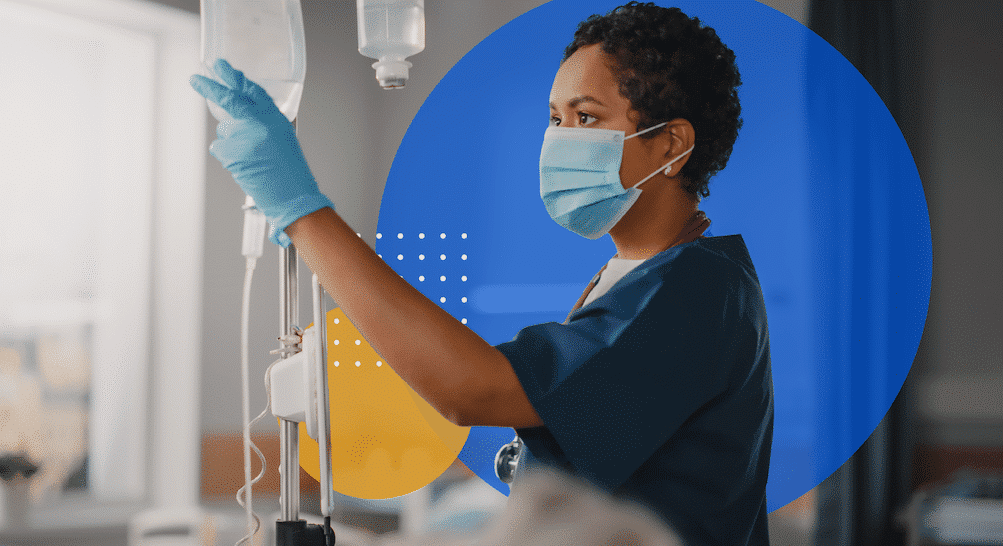Blog
Cybersecurity in homecare

Cybersecurity should be a top priority for home-based care IT specialists. With the emergence of digital healthcare solutions and new tech tools specifically designed for homecare, safeguarding patient data is a must – but sometimes it can be difficult to know where to start.
To help you get started, here are the basics of cybersecurity in homecare so you have the knowledge and information necessary to protect your patients’ sensitive data.
Introducing the Basics of Cybersecurity in Homecare
As more and more devices become connected to the internet, it’s important to understand the basics of cybersecurity in homecare. Cybersecurity simply refers to the measures we take to protect our devices and data from unauthorized access or attacks. In a homecare setting, this could involve securing personal medical information, preventing remote access to medical devices, and protecting devices from malware and viruses. While it may seem daunting, there are simple steps you can take to enhance your homecare cybersecurity. For example, regularly updating your devices’ software and using strong passwords are strong measures that can make a significant difference in protecting yourself and your loved ones. By learning about these best practices, you can ensure that your homecare environment is as safe and secure as possible.
Risk Mitigation Strategies for Homecare
Risk mitigation strategies are essential when it comes to protecting your agency from cyber threats. These strategies involve identifying potential risks, assessing their likelihood and impact, and then taking measures to reduce or eliminate them as much as possible. In homecare, this could mean implementing firewall protection, antivirus software, and two-factor authentication (2FA) protocols on devices used in the home. Additionally, you should ensure that all of your homecare data is transferred securely with encryption technology like Transport Layer Security (TLS). These steps can help protect sensitive information and provide an extra layer of security against malicious actors online.
Creating Robust Security Protocols for Your Homecare Business
For any business, having strong security protocols in place is essential. It’s especially important for homecare businesses, where there are often multiple devices connected to the internet or personal networks that need to be protected. When creating a cybersecurity plan for your business, it’s important to consider all applicable regulations and laws as well as industry best practices. This can help ensure you are taking the necessary steps to safeguard patient data and prevent unauthorized access. Additionally, it’s also wise to create policies surrounding how staff members use computers and other devices while at work or while accessing company information remotely. Ensuring users have the training they need on cyber threats and encryption technologies can help protect against malicious actors online and keep your business safe from attack.
Types of Cybersecurity Threats to Homecare
As technology continues to play an increasingly important role in our lives, it’s important to stay informed about the various cybersecurity threats that can put our personal information and privacy at risk. In the world of homecare, there are several types of cybersecurity threats that caregivers and patients need to be aware of. These threats include malware, phishing attacks, password theft, and ransomware.
- Malware is a type of software that is designed to infiltrate and damage computer systems.
- Phishing attacks involve tricking users into revealing sensitive information through emails or other communications.
- Password theft is exactly what it sounds like – hackers trying to steal login credentials for online accounts.
- And finally, ransomware is a type of malware that encrypts files on a victim’s computer and demands payment in exchange for access to the files.
Steps to Mitigate Cybersecurity Risks in Homecare
As the homecare industry continues to rely heavily on technology, the risk of cybersecurity threats increases. However, there are steps that can be taken to mitigate these risks. To start, it is important to train all employees on best cybersecurity practices and to ensure that all devices and software are up to date with the latest security patches. In addition, implementing multi-factor authentication and data encryption can add an extra layer of protection. It is also crucial to regularly perform risk assessments and have a plan in place for how to respond to a cybersecurity incident. By following these steps, we can better safeguard the sensitive information of our patients and ensure the safety and credibility of our homecare services.
a. Create strong passwords and update them regularly
Creating strong and secure passwords is an essential step in protecting your online security. A strong password is one that is difficult for others to guess, yet easy for you to remember. It is recommended that you use a combination of upper and lowercase letters, numbers, and symbols when creating a password. Avoid using personal information such as your name, birthdate, or common words. To further enhance your online security, it is crucial to update your passwords regularly, ideally every 90 days. Remember that a strong password is a crucial line of defense in safeguarding your personal information, so take the time to create and maintain one.
b. Use two-factor authentication whenever possible
It’s crucial to take advantage of two-factor authentication whenever it’s offered. Two-factor authentication provides an extra layer of protection by requiring a user to enter a unique code in addition to their password. This code is typically sent via a text message or generated by an authenticator app. By enabling two-factor authentication, you’re significantly reducing the likelihood of your accounts being hacked. Additionally, many services now make it easy to turn two-factor authentication on, so there’s no reason not to take advantage of this important security feature.
c. Educate caregivers, family members, and other users about cybersecurity best practices
As technology continues to evolve, it’s important that caregivers, family members, and other users are knowledgeable about cybersecurity best practices. With information and personal data being shared online more frequently than ever, it’s crucial that everyone understands how to protect themselves and their loved ones from potential online threats. From strong passwords to avoiding suspicious links, educating oneself on the basics of cybersecurity can go a long way in keeping personal information safe. By staying informed and implementing these best practices, we can all play a role in creating a more secure digital landscape for ourselves and those around us.
Making Homecare Data More Secure
As the number of individuals seeking home-based care services continues to rise, the importance of securing homecare data also intensifies. From medical records to financial information, homecare providers hold sensitive information that requires proper safeguarding. Encryption, access control, and regular data backups are just a few measures that can make a significant impact on the security of homecare data. By understanding the risks and taking active steps to mitigate them, we can create a safer and more secure environment for all those involved in home healthcare.
Cybersecurity for homecare is an essential component of keeping data and information safe. Homecare coordinators, caregivers, and family members must be up-to-date on the latest threats so they can use proper measures to mitigate them. Utilizing strong passwords, two-factor authentication when possible, and educating users on best practices are all great steps that can reduce the risk of a cybersecurity breach. Additionally, determining your home care’s specific needs before selecting a cybersecurity solution will help optimize its performance. With the right combination of knowledge and preparation, protecting essential homecare data from threats becomes much simpler. Taking these steps now can help ensure that critical patient information remains secure tomorrow and in the future.


